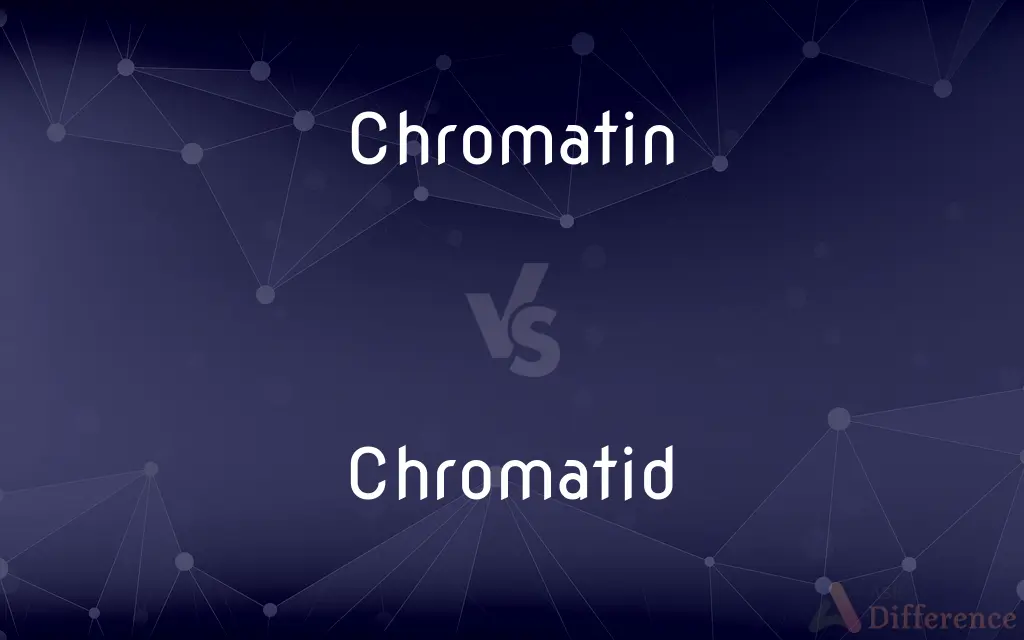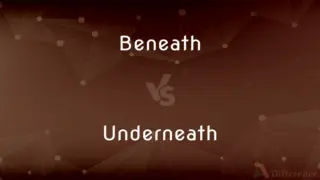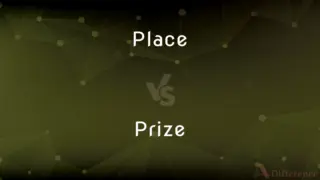Chromatin vs. Chromatid — What's the Difference?
By Tayyaba Rehman — Updated on September 20, 2023
Chromatin is the complex of DNA and proteins that make up chromosomes in a cell's nucleus. A chromatid is one of the two identical copies of a chromosome that exist just before cell division.

Difference Between Chromatin and Chromatid
Table of Contents
ADVERTISEMENT
Key Differences
Chromatin is essentially a combination of DNA and protein molecules, forming the structural basis of a chromosome. On the other hand, a chromatid refers to the duplicated, identical form of a chromosome that appears during the cell division process. While chromatin serves as the raw material for chromosomes, chromatids are specific formations that occur during particular phases of the cell cycle.
Chromatin's main role is to package the long strands of DNA into a denser, more manageable structure. Chromatids come into play when a cell prepares to divide, and each chromosome duplicates into two chromatids. Chromatin can be found throughout a cell's lifecycle, while chromatids are present mainly during and after the DNA replication phase and before cell division.
The physical appearance of chromatin and chromatids is also notably different. Chromatin is usually less condensed and can be either "euchromatin," which is loosely packed, or "heterochromatin," which is tightly packed. In contrast, chromatids are very condensed and highly structured, being visibly separated by a centromere.
Chromatin's function is not solely structural; it is also involved in gene expression and DNA repair. Chromatids, meanwhile, serve as the vessel for genetic information to be equally divided between two new daughter cells during cell division. Therefore, chromatin and chromatids play very different roles in cellular processes.
Comparison Chart
Definition
Complex of DNA and proteins
One of two identical copies of a chromosome
ADVERTISEMENT
Function
Packaging DNA, gene expression, DNA repair
Enables equal division of genetic material
Occurrence
Throughout the cell's life
Mainly during and after DNA replication
Structure
Loosely or tightly packed
Highly structured and condensed
Role in Cell Cycle
Exists in all phases
Specific to cell division phases
Compare with Definitions
Chromatin
Complex of DNA and proteins.
Chromatin helps in the organization of chromosomes within the nucleus.
Chromatid
Present during cell division.
Chromatids are essential for accurate genetic distribution.
Chromatin
Responsible for packaging DNA.
Chromatin condenses DNA to fit inside the nucleus.
Chromatid
Separated by a centromere.
The centromere holds the two sister chromatids together.
Chromatin
Involved in gene expression.
Regulatory proteins in chromatin can activate or suppress genes.
Chromatid
One of two identical copies of a chromosome.
Each chromatid carries an exact copy of the original chromosome's DNA.
Chromatin
Participates in DNA repair.
During DNA repair, chromatin structure undergoes changes.
Chromatid
Highly condensed and structured.
A chromatid is easily recognizable under a microscope.
Chromatin
Exists in euchromatin and heterochromatin forms.
Euchromatin is a loosely packed form of chromatin.
Chromatid
Result of DNA replication.
Chromatids are formed when a chromosome duplicates itself.
Chromatin
Chromatin is a complex of DNA, protein and RNA found in eukaryotic cells. Its primary function is packaging long DNA molecules into more compact, denser structures.
Chromatid
A chromatid (Greek khrōmat- 'color' + -id) is one half of a duplicated chromosome. Before replication, one chromosome is composed of one DNA molecule.
Chromatin
A complex of nucleic acids and proteins, primarily histones, in the cell nucleus that stains readily with basic dyes and condenses to form chromosomes during cell division.
Chromatid
Either of the two daughter strands of a replicated chromosome that are joined by a single centromere and separate during cell division to become individual chromosomes.
Chromatin
(biology) A complex of DNA, RNA and proteins within the cell nucleus out of which chromosomes condense during cell division.
Chromatid
(genetics) After DNA replication, either of the two connected double-helix strands of a metaphase chromosome that separate during mitosis.
Chromatin
Tissue which is capable of being stained by dyes.
Chromatid
One of two identical strands into which a chromosome splits during mitosis.
Chromatin
The deeply staining substance of the nucleus and chromosomes of eukaryotic cells, composed of DNA and basic proteins (such as histones), the DNA of which comprises the predominant physical basis of inheritance. It was, at the beginning of the 20th century, supposed to be the same substance as was then termed idioplasm or germ plasm. In most eukaryotic cells, there is also DNA in certain plasmids, such as mitochondria, or (in plant cells) chloroplasts; but with the exception of these cytoplasmic genetic factors, the nuclear DNA of the chromatin is believed to contain all the genetic information required to code for the development of an adult organism. In the interphase nucleus the chromosomes are dispersed, but during cell division or meiosis they are condensed into the individually recognizable chromosomes. The set of chromosomes, or a photographic representation of the full set of chromosomes of a cell (often ordered for presentation) is called a karyotype.
Chromatid
One of two identical strands into which a chromosome splits during mitosis
Chromatin
The readily stainable substance of a cell nucleus consisting of DNA and RNA and various proteins; during mitotic division the chromatin condenses into chromosomes
Common Curiosities
What is Chromatin?
Chromatin is a complex of DNA and proteins that forms chromosomes.
When does Chromatin exist?
Chromatin exists throughout the cell's lifecycle.
What is a Chromatid?
A chromatid is one of two identical copies of a chromosome.
Is Chromatin involved in gene expression?
Yes, chromatin is involved in gene expression and DNA repair.
What is the function of a Chromatid?
Chromatids ensure equal genetic distribution during cell division.
How is Chromatin structured?
Chromatin can be loosely or tightly packed, known as euchromatin and heterochromatin.
When are Chromatids formed?
Chromatids are formed during and after DNA replication.
Is a Chromatid highly structured?
Yes, a chromatid is highly condensed and structured.
Do Chromatin and Chromatids exist in all cells?
Chromatin exists in all nucleated cells, while chromatids are specific to dividing cells.
What proteins are associated with Chromatin?
Histone proteins mainly associate with chromatin.
Is a Chromatid a type of Chromatin?
No, a chromatid is a specific formation that occurs during cell division.
What holds Chromatids together?
The centromere holds chromatids together.
Is Chromatin visible under a microscope?
Chromatin can be seen under a high-resolution microscope.
Are Chromatids visible under a microscope?
Yes, chromatids are easily recognizable under a microscope.
Is Chromatin involved in DNA repair?
Yes, chromatin participates in DNA repair processes.
Share Your Discovery

Previous Comparison
Beneath vs. Underneath
Next Comparison
Place vs. PrizeAuthor Spotlight
Written by
Tayyaba RehmanTayyaba Rehman is a distinguished writer, currently serving as a primary contributor to askdifference.com. As a researcher in semantics and etymology, Tayyaba's passion for the complexity of languages and their distinctions has found a perfect home on the platform. Tayyaba delves into the intricacies of language, distinguishing between commonly confused words and phrases, thereby providing clarity for readers worldwide.














































